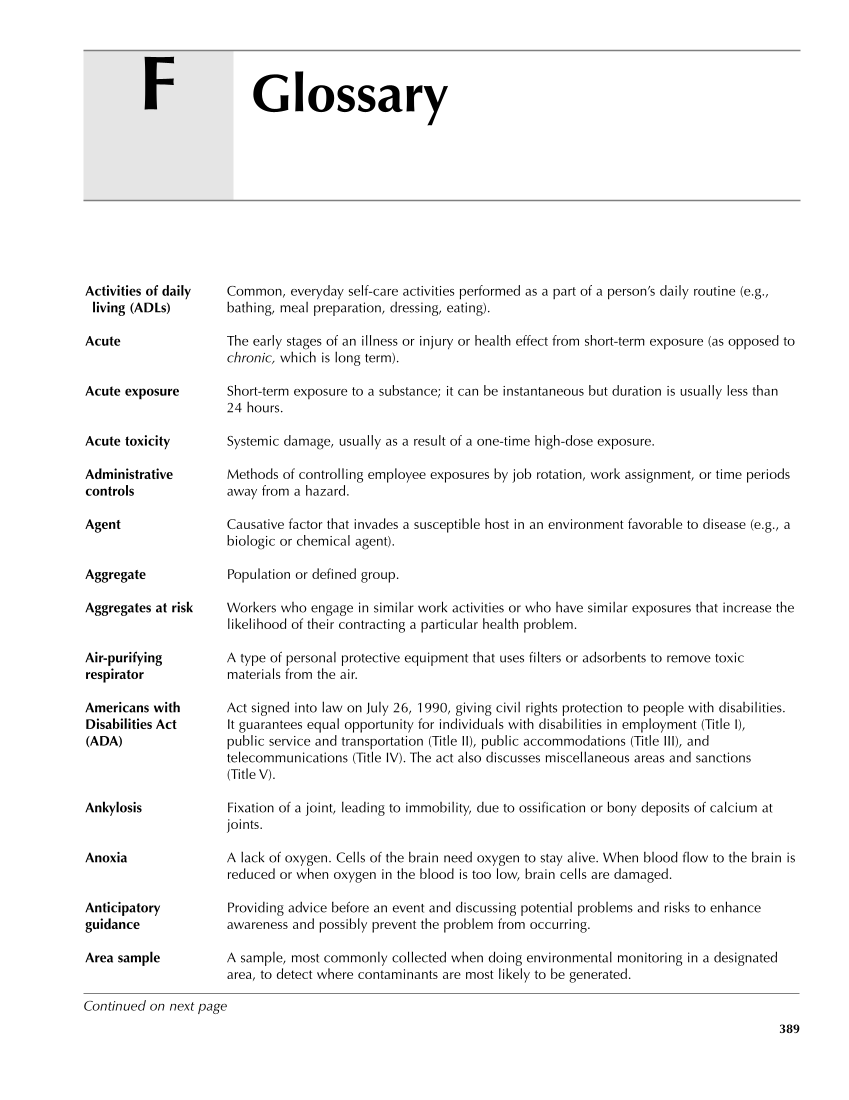389 Glossary F Activities of daily Common, everyday self-care activities performed as a part of a person’s daily routine (e.g., living (ADLs) bathing, meal preparation, dressing, eating). Acute The early stages of an illness or injury or health effect from short-term exposure (as opposed to chronic, which is long term). Acute exposure Short-term exposure to a substance it can be instantaneous but duration is usually less than 24 hours. Acute toxicity Systemic damage, usually as a result of a one-time high-dose exposure. Administrative Methods of controlling employee exposures by job rotation, work assignment, or time periods controls away from a hazard. Agent Causative factor that invades a susceptible host in an environment favorable to disease (e.g., a biologic or chemical agent). Aggregate Population or defined group. Aggregates at risk Workers who engage in similar work activities or who have similar exposures that increase the likelihood of their contracting a particular health problem. Air-purifying A type of personal protective equipment that uses filters or adsorbents to remove toxic respirator materials from the air. Americans with Act signed into law on July 26, 1990, giving civil rights protection to people with disabilities. Disabilities Act It guarantees equal opportunity for individuals with disabilities in employment (Title I), (ADA) public service and transportation (Title II), public accommodations (Title III), and telecommunications (Title IV). The act also discusses miscellaneous areas and sanctions (Title V). Ankylosis Fixation of a joint, leading to immobility, due to ossification or bony deposits of calcium at joints. Anoxia A lack of oxygen. Cells of the brain need oxygen to stay alive. When blood flow to the brain is reduced or when oxygen in the blood is too low, brain cells are damaged. Anticipatory Providing advice before an event and discussing potential problems and risks to enhance guidance awareness and possibly prevent the problem from occurring. Area sample A sample, most commonly collected when doing environmental monitoring in a designated area, to detect where contaminants are most likely to be generated. Continued on next page
Purchased from OEM Press by (ge corporate access). (C) 2013 OEM Health Information, Inc. All rights reserved.












































































































































































































































































































































































































































